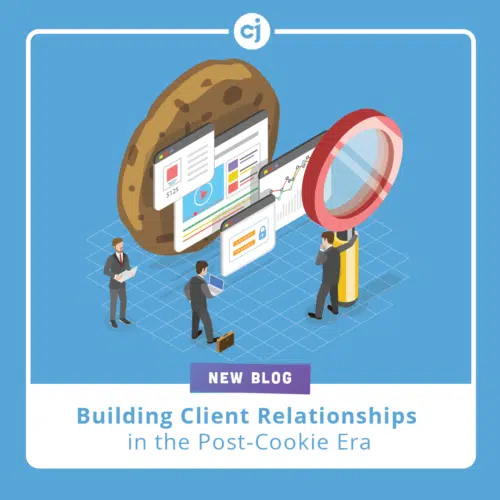One of Google’s top priorities is offering search results that readers find valuable. This ensures people trust their product, find it useful, and continue to use it. So, in August 2022, Google began rolling out a “helpful content update,” which sought to improve the quality of content listed in search results. While initially a standalone update, Google has since rolled it into their core algorithm, seeking to rid search results of anything unhelpful.
But what exactly does “unhelpful content” mean? Fortunately, Google is clear on the matter. You can improve the overall quality of your site and further optimize your search engine result position by paying attention to their advice.
What Does Unhelpful Content Look Like?
Unhelpful content is shallow and unoriginal. It’s not adding anything to the conversation online. Instead, it regurgitates other websites’ content and provides little value to users.
One indicator of unhelpful content is length. This type of content might be short, especially in the context of the topic of the page. While helpful content seeks to cover a topic from all angles and give users what they were looking for when they clicked on a Google search result, unhelpful content does the opposite: it’s often one-sided and lacking in detail. For example, unhelpful content might offer readers a couple of poorly written paragraphs to address a topic that deserves far more nuance and insight.
Unhelpful content might also contain spelling or grammatical errors. Such simple mistakes are indicators of poor quality and possibly poor source material—lowering its value to the average Google user.
The Attributes of Unhelpful Content
Google provides documentation on how it evaluates content to determine its helpfulness. By looking at their guidelines, we can study and analyze the qualities that Google might consider to be unhelpful content.
According to this documentation, unhelpful content:
- Lacks original information, just copies or rewrites other sources
- Provides a superficial, incomplete, or narrow description of the topic
- Offers no insightful analysis or interesting information beyond the obvious
- Has a vague, misleading, or exaggerated title/heading
- Is not the type of content you’d want to bookmark, share, or see referenced
- Provides little to no additional value compared to other search results
- Contains spelling, grammar, or stylistic errors
- Appears sloppy and hastily produced or shows lack of care
- Is mass-produced content without much individual attention or customization
- Lacks the comprehensiveness or depth expected from a printed publication
If you want to identify the helpfulness of content on your site, you can use the list above to evaluate your pages. If you find that many of your pages share these attributes, you might have a lot of unhelpful content, and that could be bad for your website’s performance.
How Does Unhelpful Content Affect Your Site?
Initially, the helpful content algorithm looked at a site in its entirety to determine if it had substantial amounts of unhelpful content. If it did, the site was classified as such, causing sitewide rankings to decline significantly.
In March 2024, Google pivoted to focus more on individual pages. If a site has unhelpful content, it will hurt rankings, particularly for the pages with said content. It also sends signals to Google that your website isn’t credible or authoritative.
The Attributes of Helpful Content
If you now grasp what constitutes unhelpful content, you might be wondering how Google evaluates high-quality, helpful content. Thankfully, they’ve outlined what their algorithm looks for when determining if a page’s content should be showcased higher among the search results.
The acronym they’ve refined over time to evaluate helpful content is E-E-A-T. These letters stand for:
- Experience: This is the latest addition to the acronym, and it indicates that Google highly values firsthand, real-life experience of the topic at hand.
- Expertise: This evaluates whether the author of the page has expertise in the topic at hand, e.g., if a birth injury page is created by a lawyer who clearly knows a lot about the subject and has a deep familiarity with its complexities.
- Authoritativeness: This factor has to do with whether the page is a trustworthy source for the topic at hand. For example, a literature website advising a reader on pedestrian injury law might be marked as having low authoritativeness on the subject.
- Trust: Perhaps the most important of all four factors, the trust factor seeks to weed out sketchy websites, like those that lack contact information.
Is AI Content Considered Unhelpful?
AI content isn’t automatically considered unhelpful content, but if poorly deployed, it will likely fall into that category. AI content often has a veneer of expertise and authoritativeness but problems may arise when a reader (or Google content evaluator!) digs into the details: outdated information or laws, guesswork or pure invention, made-up sources, and predictable phrasings and diction.
If you’re using AI content on your webpage, keep it fresh and helpful to users by having a real person edit and augment the writing, zeroing in on those problematic areas and doublechecking every claim that the AI author makes.
You Don’t Need to Panic—But You Should Take Helpfulness Seriously
You don’t need to worry if there are a few older posts on your website that are relatively thin. That’s normal. But if you find an excessive amount of outdated or unhelpful pieces, it’s time to figure out what should be updated and what should be removed. Some pages might require you to start from scratch, while others can be saved with some smart edits and additions. Just keep these content guidelines in mind!
If you have any questions or concerns about the helpfulness of your content, reach out to your cj Brand Strategist today. Let’s start the conversation.


